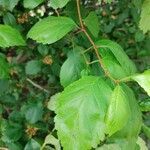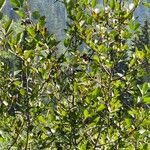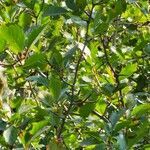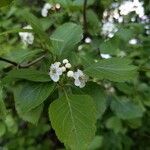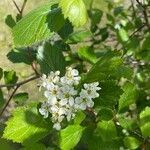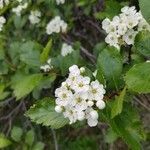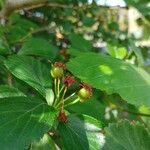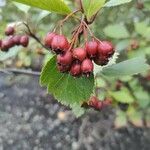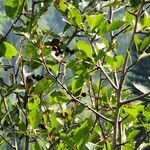Tree to 12 m, or sometimes an arborescent shrub; twigs glabrous, unarmed or with scattered stout thorns 1–2.5 cm; lvs oblong-obovate to elliptic, often broadly so, mostly 2–4 × 1.5–3 cm and with 2–4 pairs of small, shallow, often irregular lateral lobes, or larger and more deeply cleft on vegetative shoots, firm, dark green and glossy above, essentially glabrous; fls 1–1.3 cm wide, in mostly 5–12-fld glabrous compound cymes; fr 0.8–1 cm thick, dark wine-color to black when fully ripe, succulent; nutlets 3–5, with a large pit on the inner surface. Local near Lake Superior and Lake Huron in ne. Minn., n. Mich., and Ont.; widespread in the w. cordillera.
A small tree. It grows to 11 m tall. The leaves are small and 2-8 cm long. They have coarse double teeth around the edge. There are shallow lobes. The thorns are short, less than 3 cm. The fruits are oval and 8-10 mm across. They are dark reddish-purple or black.
